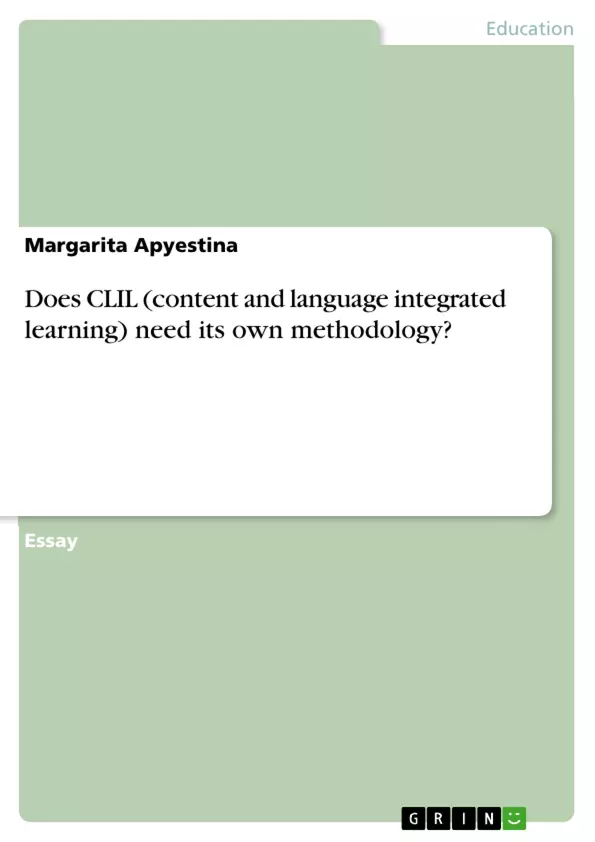The reason for using especially English for content and language integrated learning (CLIL) nowadays is its function as the global "lingua franca" which means that English is used in such areas as traveling, business, economy, science and entertainment by both native and non-native speakers of English to enable communication with speakers of different languages. Germany holds more than 800 schools that offer CLIL in different modern languages, especially English, whereas North Rhine-Westphalia is the German leader in the field of CLIL [...].
Inhaltsverzeichnis (Table of Contents)
- Does CLIL need its own methodology?
- CLIL in Germany: From French to English
- The CLIL Curriculum
- Intercultural Learning: A Key Component of CLIL
- Authentic Materials and Topics in CLIL
- The Need for a Special Methodology for CLIL
- CLIL Methodology: A Framework for Success
- Reception: Comprehensible Input
- Production: Comprehensible Output
Zielsetzung und Themenschwerpunkte (Objectives and Key Themes)
This paper explores the need for a dedicated methodology in Content and Language Integrated Learning (CLIL), a teaching approach that involves teaching a subject through a foreign language. It examines the current state of CLIL implementation in Germany and highlights the unique challenges and opportunities associated with this approach.
- The evolution of CLIL in Germany, particularly the shift from French to English as the primary foreign language for instruction.
- The lack of a standardized curriculum for CLIL and the importance of developing a specialized methodology.
- The role of intercultural learning and the development of intercultural communicative competence in CLIL.
- The benefits of using authentic materials and topics in CLIL, promoting deeper engagement and language acquisition.
- The need for a specific methodology to address the "double burden" of learning content and language simultaneously.
Zusammenfassung der Kapitel (Chapter Summaries)
This paper begins by tracing the historical development of CLIL in Germany, emphasizing the initial focus on French instruction and the subsequent shift towards English. It then explores the curriculum landscape, highlighting the lack of a dedicated CLIL curriculum and the emergence of "recommendations" in some regions. The importance of developing students' subject-specific terminology in both languages is emphasized, acknowledging the cognitive and linguistic challenges inherent in CLIL. The paper further examines the role of intercultural learning, which involves developing intercultural communicative competence and fostering cultural awareness. The benefits of authentic materials and topics in CLIL are also highlighted, emphasizing the need for a methodology that encourages active engagement and authentic communication.
Schlüsselwörter (Keywords)
This paper focuses on the core concepts and themes of Content and Language Integrated Learning (CLIL), including bilingual instruction, intercultural learning, curriculum development, methodology, authentic materials, comprehensible input, comprehensible output, and code-switching. The work also examines the challenges and opportunities associated with integrating content and language learning in the context of German education.
- Quote paper
- Margarita Apyestina (Author), 2011, Does CLIL (content and language integrated learning) need its own methodology?, Munich, GRIN Verlag, https://www.grin.com/document/262752



